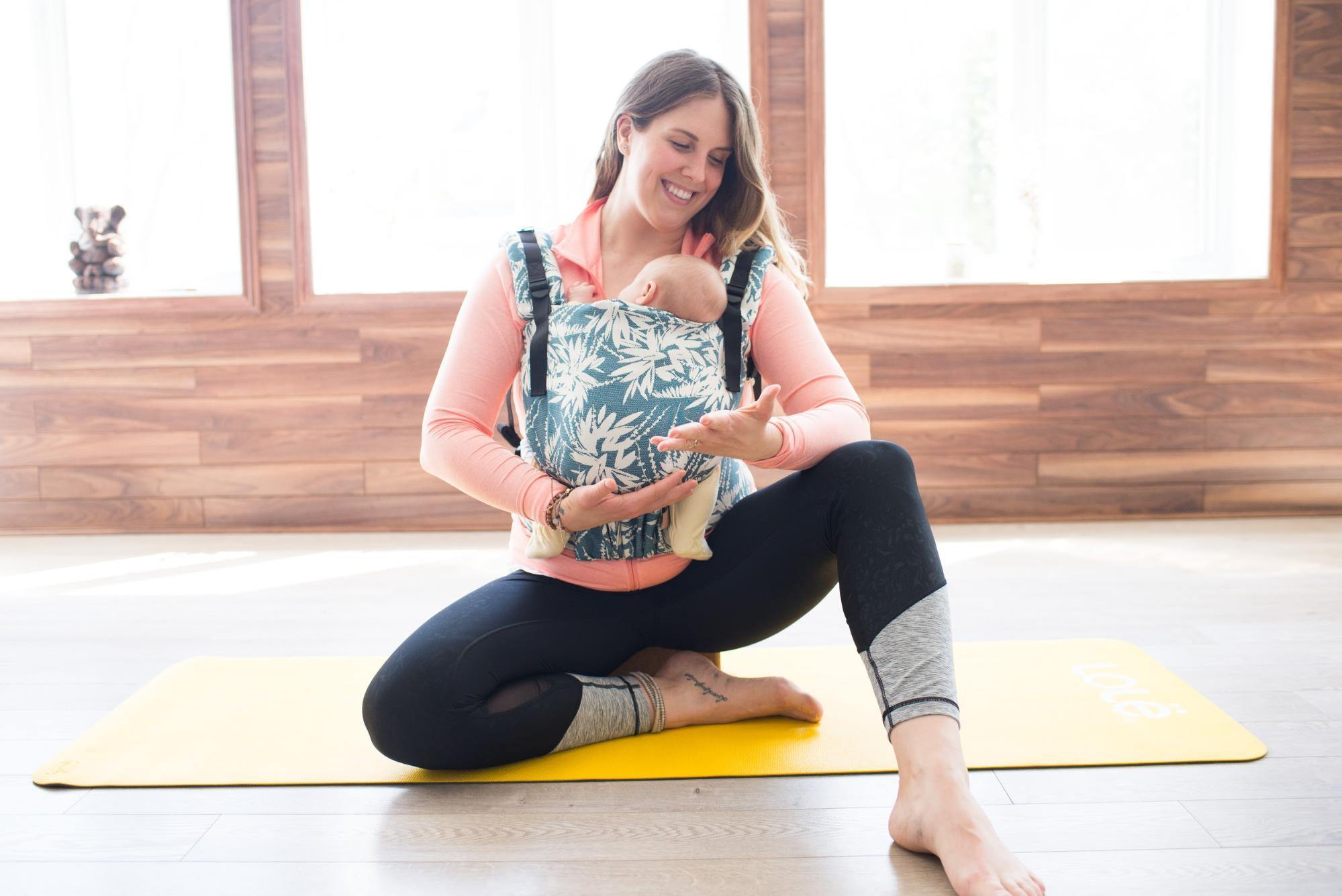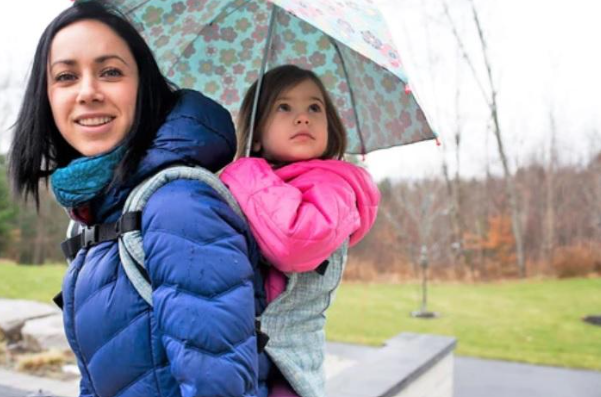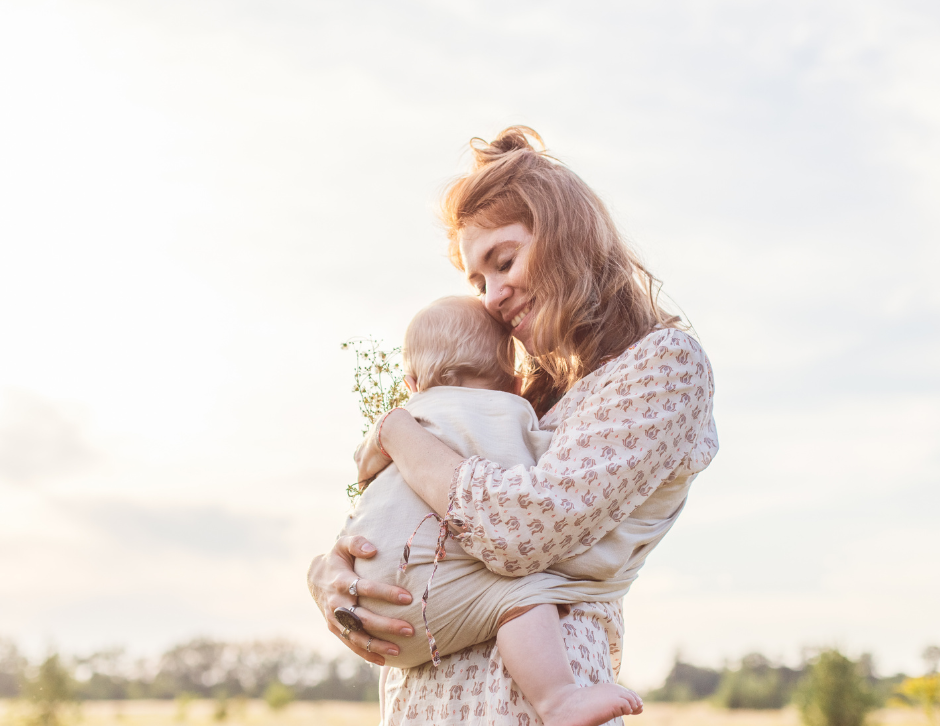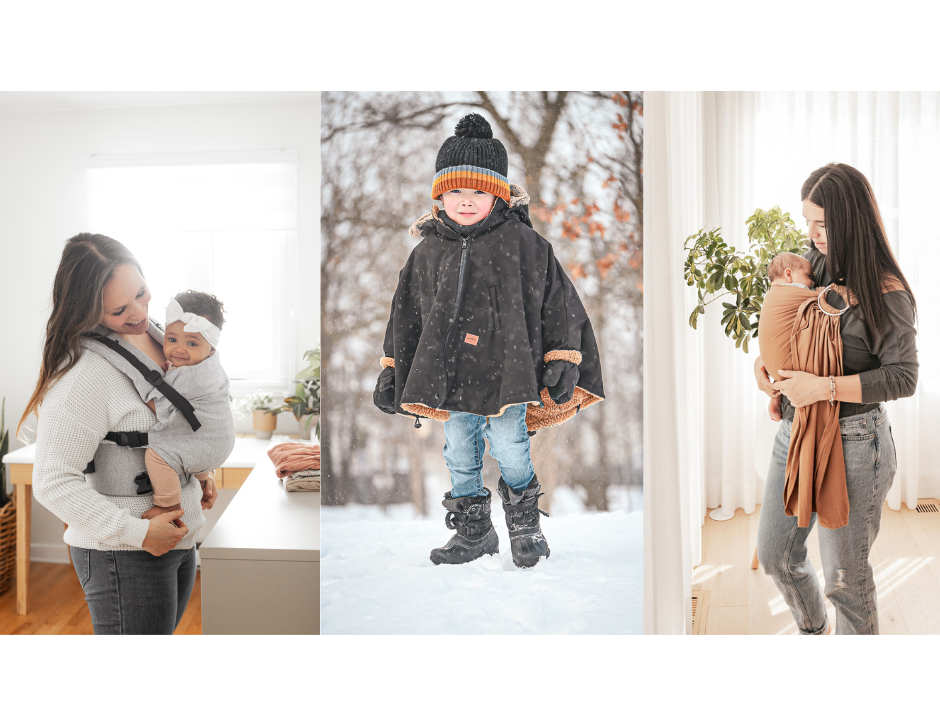5 POSTURES TO SUPPORT THE NEW MOM EVERY DAY!
We know the benefits of yoga during the perinatal period: relief of physical ailments and fluctuating moods accompanying pregnancy, opening of the pelvis, softening of the pelvic floor and technique for managing sensations as preparation for childbirth .
Many pregnant women discover the practice of yoga during this transformative period. Following the arrival of the new baby, traveling to the studio to practice yoga is not always possible and at home, the new mother is not necessarily equipped to practice without the instructions of a teacher who knows her situation. current health. Especially since we should encourage new mothers to take their time to create a strong bond with their baby.
The resumption of physical exercise being secondary, the fact remains that all women end up feeling the need to stretch themselves sooner or later.
THE POSTPARTUM BODY
During 9 months, the body transforms little by little in order to adapt to the sublime belly which testifies to the life which takes shape within itself. The center of gravity shifts forward, tilting the pelvis, which results in a hyper-lordotic spine (exaggeration of the natural curve of the lower back).
The hormone relaxin, secreted from the very beginning of pregnancy, will circulate in the mother's blood as long as she breastfeeds. As a result, the woman discovers a sort of “false flexibility” which, if not careful, could lead to injury. It is therefore essential to take care of your joints by practicing physical activity and gentle stretching.
THE OBJECTIVES OF POSTNATAL YOGA
The role of the postnatal yoga teacher is first to guide mothers to completely relax and then relearn the non-pregnant body to adopt a healthy posture again. The feet are the foundation of many postures and we learn that their activity is linked to the pelvic floor, which also must be gently re-educated (both its relaxation and its contraction).
It is only once the joints are well stabilized and the movements of the pelvic floor are integrated and fluid that we will explore postures also targeting muscle tone.
By practicing various relaxation, breathing and meditation techniques, we also manage to calm the mind and cultivate kindness towards ourselves above all else. We become aware of the fact that the body is capable of regaining its mobility if we give it time (sometimes more than it took to make our baby, be patient :)) We learn to trust the body and to let go. We take the time to thank life for giving us this gift of motherhood.
CARRYING POSTURES REMINISCING EVERYDAY DAY
Combining the many benefits of babywearing with the practice of yoga is a powerful tool for feeling alive and connected to your baby! The addition of mini weight in the baby carrier (a reminder of the effects of pregnancy on the body) requires special attention but also represents the nature of everyday life in the first months.
The objective, therefore: to manipulate baby by bringing consciousness back into mother's body to optimize postpartum recovery and avoid injuries. Once the body is accustomed to practicing the yoga-carrying postures listed in the following section, it will integrate their notions of alignment through the harmless movements that we constantly repeat when it comes to taking care of a baby.
In short, the postures proposed below therefore aim to:
- Imitate certain repetitive movements of a mother's life: lifting baby off the ground, moving around with baby in arms, breastfeeding him, rocking him.
- Slow down and release the tension that builds up too easily in the body when we leave a comfort zone (like having a child 😉
- Relax baby! Yes yes, you read correctly. As everything is a question of energy transfer, a calm and serene mother certainly influences the state of her child in the same direction.
So without further ado, put on your Gustine and join me!
COME ON, HERE WE GO!
We know the benefits of yoga during the perinatal period: relief of physical ailments and fluctuating moods accompanying pregnancy, opening of the pelvis, softening of the pelvic floor and technique for managing sensations as preparation for childbirth .
Many pregnant women discover the practice of yoga during this transformative period. Following the arrival of the new baby, traveling to the studio to practice yoga is not always possible and at home, the new mother is not necessarily equipped to practice without the instructions of a teacher who knows her situation. current health. Especially since we should encourage new mothers to take their time to create a strong bond with their baby.
The resumption of physical exercise being secondary, the fact remains that all women end up feeling the need to stretch themselves sooner or later.
THE POSTPARTUM BODY
During 9 months, the body transforms little by little in order to adapt to the sublime belly which testifies to the life which takes shape within itself. The center of gravity shifts forward, tilting the pelvis, which results in a hyper-lordotic spine (exaggeration of the natural curve of the lower back).
The hormone relaxin, secreted from the very beginning of pregnancy, will circulate in the mother's blood as long as she breastfeeds. As a result, the woman discovers a sort of “false flexibility” which, if not careful, could lead to injury. It is therefore essential to take care of your joints by practicing physical activity and gentle stretching.
THE OBJECTIVES OF POSTNATAL YOGA
The role of the postnatal yoga teacher is first to guide mothers to completely relax and then relearn the non-pregnant body to adopt a healthy posture again. The feet are the foundation of many postures and we learn that their activity is linked to the pelvic floor, which also must be gently re-educated (both its relaxation and its contraction).
It is only once the joints are well stabilized and the movements of the pelvic floor are integrated and fluid that we will explore postures also targeting muscle tone.
By practicing various relaxation, breathing and meditation techniques, we also manage to calm the mind and cultivate kindness towards ourselves above all else. We become aware of the fact that the body is capable of regaining its mobility if we give it time (sometimes more than it took to make our baby, be patient :)) We learn to trust the body and to let go. We take the time to thank life for giving us this gift of motherhood.
CARRYING POSTURES REMINISCING EVERYDAY DAY
Combining the many benefits of babywearing with the practice of yoga is a powerful tool for feeling alive and connected to your baby! The addition of mini weight in the baby carrier (a reminder of the effects of pregnancy on the body) requires special attention but also represents the nature of everyday life in the first months.
The objective, therefore: to manipulate baby by bringing consciousness back into mother's body to optimize postpartum recovery and avoid injuries. Once the body is accustomed to practicing the yoga-carrying postures listed in the following section, it will integrate their notions of alignment through the harmless movements that we constantly repeat when it comes to taking care of a baby.
In short, the postures proposed below therefore aim to:
- Imitate certain repetitive movements of a mother's life: lifting baby off the ground, moving around with baby in arms, breastfeeding him, rocking him.
- Slow down and release the tension that builds up too easily in the body when we leave a comfort zone (like having a child 😉
- Relax baby! Yes yes, you read correctly. As everything is a question of energy transfer, a calm and serene mother certainly influences the state of her child in the same direction.
So without further ado, put on your Gustine and join me!
#1 THE MOUNTAIN
To adopt an optimal standing posture. Stand with your feet under your hips. Lift the toes to engage the soles of the feet, consequently activating the pelvic floor, before consciously lowering them one by one to the ground.
Observe the muscular activation rising from the ankles to the supple knees (be careful not to “bar” them in hyper extension), then from the knees to the hips, the quadriceps slightly toned. Does the weight of the baby against you propel your pelvis forward? To remedy this, imagine that the points of your two hips can move towards each other, thus subtly activating your transverse abdominals.
Bring your attention to your heart, which is trying to rise toward the sky, but make sure your lower ribs don't stick out. Let your collarbones widen and your shoulders fall toward the floor, relaxed, with your palms facing forward.
Imagine that a string attached to the top of your head is pulling you up to the sky, making you feel like you are growing an inch taller. Finally, lower your chin parallel to the ground and slightly retracted towards your neck (as if to create the effect of a double chin). Once you have mastered everything, the simple standing posture can be more difficult than expected, that's normal!
Observe the effect this posture has on your body and mind. Try to adopt the basic principles when standing or waltzing to put your baby to sleep.
#2 SUKHASANA
To adopt an optimal sitting posture. Sit on the floor, on a block, cushion or folded pillow, allowing you to maintain the natural curve of the lower back without creating tension in the groins. Place your hands on your knees and rock back and forth to feel your sit bones (gluteal bones) firmly pressed into the ground. Lengthen the spine by repeating the instructions from the previous posture. Then, explore various positions with your feet/legs and/or with other cushions to support the arm that would hold baby while breastfeeding.
Once again, observe the tensions in your body and note the formula that gives you the most comfort while keeping your back straight. Nursing pillows with which you sit on soft couches are practical at first, but a more physiological posture will leave you less achy.
Once you have tried breastfeeding with your spine lying comfortably, you will instantly feel less tension around your neck and shoulders. Take advantage of this ease to breathe more deeply and relax!
#3 DYNAMIC FORWARD FLEXION
To lift baby better! Open your feet wider than your hips and bend your knees directly over your toes, but not past them (thus protecting your knee).
Flexion takes place from the tilt of the pelvis, with the sit bones pointing backwards. Here too, the spine is kept straight via the engagement of the transverse and back muscles, directing the heart towards the ground, the chest wide open.
The ascent is initiated by the feet actively pressing into the ground, which therefore engages the pelvic floor. Hands remain in contact with the baby's back at all times.
#4 THE CHAIR ON THE WALL
To gently strengthen the quadriceps and massage the back!
The back is pressed against the wall (from the sacrum, the flat bone in the lower back, to the back of the head, including the shoulders). The femurs are parallel to the ground with the knees at 90 degrees, feet firmly rooted to the ground. Hold the static posture for a few breaths before beginning to lift one shoulder slightly away from the wall by pressing the opposite shoulder blade into the wall, then switching sides so that the back rolls laterally from side to side.
Move slowly and take time to explore and release each of the tensions that will surface, as your thighs begin to warm up. A well-balanced posture between yin and yang feels great!
#5 THE TREE
To have fun
Transfer the weight to one leg and lift the toes of the foot on that same side to activate the sole of the foot, then lower them again so as to extend the contact surface of the skin on the ground. With your leg strong and your quadricep engaged, fix a still point in the distance as a focus, before lifting the other foot and placing it on the inside of the calf or thigh (avoid the knee). For more balance, you can also hold the knee with your hand, the floating foot flexed at the ankle, as shown in the image.
Align the hips above the knee and the shoulders above the hips. Support yourself with one hand on the wall if necessary to avoid falls. Embody the strength and stability of a tree, the roots strong on the ground and the leaves (upper body and face) flexible. It can be helpful to practice this pose in profile in front of a mirror to make sure everything is aligned properly.
Once in place, imagine growing an inch again. Proudly maintain your balance for a few breaths before changing sides.
IN CONCLUSION
To end the practice, remove your child from the baby carrier and lie down for a few moments in silence. Thank life for the most beautiful gift of bringing a child into the world and for this body capable of supporting you. Thank yourself for choosing to begin this practice and giving the gift of yoga and its benefits to your child, no matter how small. Namaste!
Note: Please consult your doctor before starting or resuming any form of physical activity.
By Karine Ricard
Those who know me know that I am a BIG fan of babywearing. Sasha, my first daughter, was opposed to the idea during her first 3 months of life, much to my dismay (I was already imagining myself wearing it during my pregnancy). But like everything related to the arrival of a new baby, it's rarely mom who decides, mini is the boss. And here she didn't want to know anything and was crying after 5 minutes in every type of baby carrier, from sling to preformed.
It was during a short trip where walking would be our main mode of transport that I “forced” her to resign herself. My tactic? Present him with the breast as soon as I placed it near my heart, as bait.
A kind of super effective conditioning, like Pavlov and his dog, because from then on, I wore it almost every day of my maternity leave in a variety of contexts. What a practice that is both fusional and… practical!
Today, I am lucky enough to have a 2nd little chick who has been carried for several hours a day since birth (or almost) - HAPPINESS! Hello multitasking: walking in nature, washing dishes, vacuuming, folding reusable diapers, preparing dinner, relaxing on the couch, “name it”! All while baby sleeps! ✓
I even completed not one, but two weekend yoga trainings when June was less than two months old. I was found to be quite courageous but once again, baby is the boss and it seems like she was okay with that. Four days of several hours which impressed many people because she was so wonderful... I immediately responded to the first cries by putting her in the baby carrier, baby-fafa. Anyway! No need to continue expressing how much I love babywearing, I think you get the idea.
So when Marie-Pier, the owner of Gustine Baby Carriers contacted me through a mutual friend (thank you Sabrina!) to discuss a “yoga and babywearing” collaboration, I immediately accepted. I fell in love not only with the product but also with the founder and her photographer friend (hello Kim!).
FOLLOW KARINE RICARD ON FACEBOOK:
http://www.facebook.com/karinericardwellness/







Leave a comment